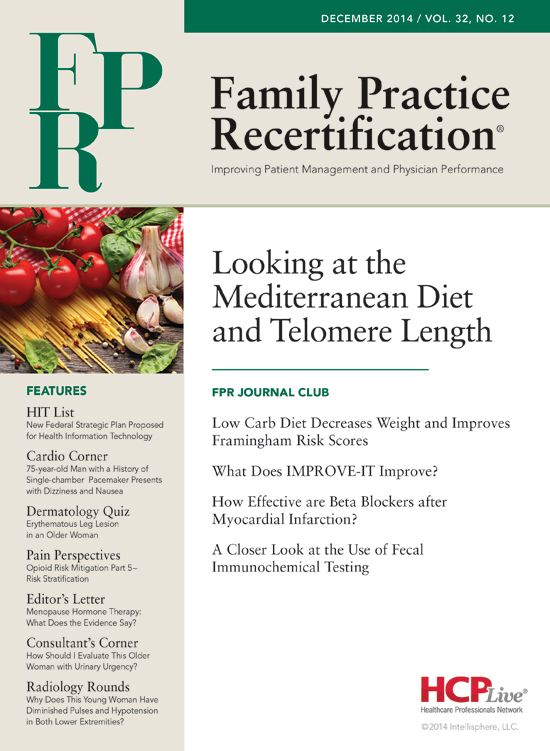Publication
Article
Family Practice Recertification
Menopause Hormone Therapy: What Does the Evidence Say
Author(s):
It has been more than a decade since the findings of the Women's Health Initiative and even since that time the question of estrogen treatment remains contentious for the medical community.

During a recent session supervising resident physicians at our family health center, a resident presented a 54 year old homemaker female with severe hot flashes interfering not only with sleep but also causing her to limit activities outside of the home. Her past medical history was notable only for having undergone a hysterectomy at age 42 years for symptomatic fibroids.
Despite treatment trials with soy isoflavones, black cohosh, transdermal clonidine, venlafaxine, and gabapentin, she continued to experience symptoms driving her to her wit’s end. When I queried whether the patient had ever been offered a trial with estrogen, the resident responded that she had not discussed this option with the patient because of the risk of breast cancer and heart attacks.
We are now more than 13 years following disclosure of the initial findings of the Women’s Health Initiative (WHI), a seminal study which forever changed the way we look at menopause hormone therapy (MHT). Prior to it, many clinicians favored use of MHT not only for the relief of menopausal symptoms but also for a presumed cardioprotective effect overwhelmingly supported by observational studies.
Although WHI served to confirm prior suspicions that the use of estrogen plus progestin increased the risk of breast cancer and venous thromboembolism, it shocked the medical community when it showed a higher cardiac risk as well.
Although subsequent analysis of the WHI data revealed the higher risk applied mainly to older postmenopausal women, the average age of women in WHI was 63 years, this has done little to dissuade the already-planted notion that use of MHT placed ALL menopausal women at higher risk for a heart attack and was best avoided.
Too often overlooked have been the findings of the unopposed estrogen arm of WHI which looked at women who had previously undergone a hysterectomy. Although a higher risk of venous thromboembolism and stroke was demonstrated, an increased risk for breast cancer and myocardial infarction was not.
In fact, a reduced risk of breast cancer is still seen in women treated with estrogen during WHI and followed for 6 years after completion of the study. With regards to coronary heart disease, not only has no higher coronary heart disease (CHD) risk been demonstrated with unopposed estrogen but, based on coronary calcification scans, the use of estrogen early following the onset of menopause appears to have a beneficial effect.
Although final adjudication of the estrogen plus progestin arm of WHI continues to demonstrate a higher risk of breast cancer, venous thromboembolism, and stroke in all postmenopausal patients, it is notable that the higher risk of breast cancer did not appear until patients had been on MHT for more than 4 years. What about the risk for CHD? The WHI determined the higher cardiac risk was confined to older post-menopausal women who initiated MHT more than 10 to 20 years following onset of the menopause.
Why the continued reluctance of physicians to prescribe MHT for all women? As has been the experience with the much-maligned intrauterine contraceptive device (IUD), physicians tend to be “gun-shy” and have difficulty retreating from clinical admonitions they have come to embrace. This appears to be particularly the case if the admonitions arose following subsequent studies which contradicted what was previously thought and practiced.
The solution to the conundrum lies in the practice of evidence-based medicine (EBM). Contrary to what is commonly thought, the practice of EBM involves much more than assessing the validity of the medical information available and basing practice solely on that. In addition to analyzing the findings of relevant studies in terms of statistical significance (e.g. p values and confidence intervals,) and study method and design (e.g. randomized clinical trials, meta-analysis, cohort studies, case-control studies, cross-sectional studies, etc.), evidence-based medicine also requires determining how generalizable the study’s findings are to their practice and specifically how applicable it is to the patient being seen. How any given patient is best managed is determined not only by the best research evidence available, but also individual circumstances, including medical history, health-related behaviors, and personal goals and values.
My advice to the resident was for her to sit down and discuss with the patient the pros and cons of estrogen therapy as well as the applicability of WHI to her specific circumstances. Although WHI did not prove the long-term use of unopposed estrogen ERT reduces the risk of breast cancer or coronary heart disease, it did find estrogen use limited to 7 years was not associated with a higher risk of breast cancer or heart disease either during treatment or for the 6 years following. Since hot flashes in the majority of postmenopausal women will likely disappear within 5 to 6 years of the menopause, to categorically and unilaterally withhold estrogen therapy as an option in all postmenopausal women unnecessarily denies many women an intervention likely to improve quality of life.




